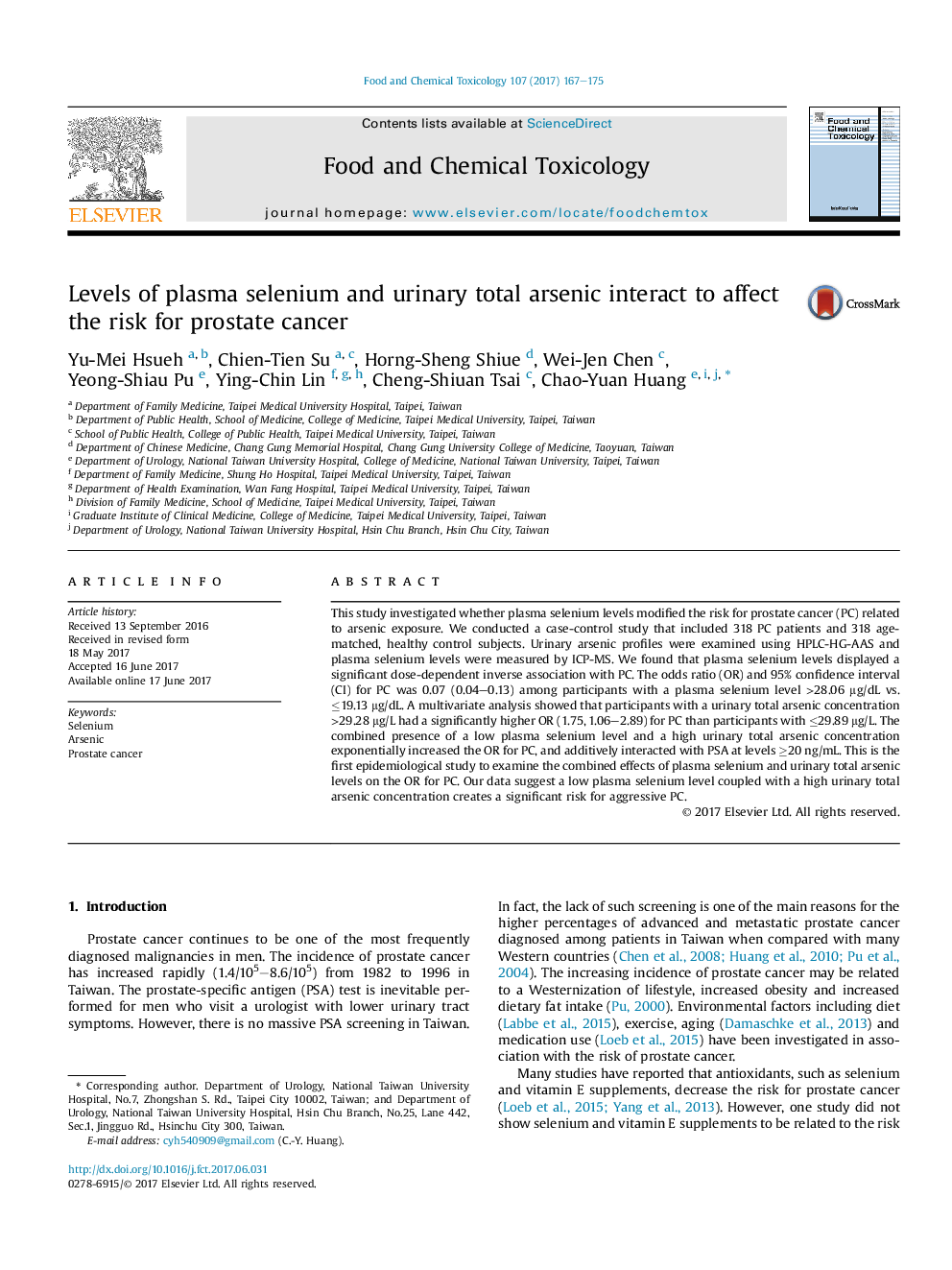| Article ID | Journal | Published Year | Pages | File Type |
|---|---|---|---|---|
| 5560071 | Food and Chemical Toxicology | 2017 | 9 Pages |
â¢Plasma Se was significantly inversely associated with PC in a dose-response manner.â¢Low plasma Se levels interact with high urinary total As levels to increase the risk for PC.â¢Low plasma Se levels interact with high urinary total As levels to increase the risk for a PSA ⥠20 in patients with PC.
This study investigated whether plasma selenium levels modified the risk for prostate cancer (PC) related to arsenic exposure. We conducted a case-control study that included 318 PC patients and 318 age-matched, healthy control subjects. Urinary arsenic profiles were examined using HPLC-HG-AAS and plasma selenium levels were measured by ICP-MS. We found that plasma selenium levels displayed a significant dose-dependent inverse association with PC. The odds ratio (OR) and 95% confidence interval (CI) for PC was 0.07 (0.04-0.13) among participants with a plasma selenium level >28.06 μg/dL vs. â¤19.13 μg/dL. A multivariate analysis showed that participants with a urinary total arsenic concentration >29.28 μg/L had a significantly higher OR (1.75, 1.06-2.89) for PC than participants with â¤29.89 μg/L. The combined presence of a low plasma selenium level and a high urinary total arsenic concentration exponentially increased the OR for PC, and additively interacted with PSA at levels â¥20 ng/mL. This is the first epidemiological study to examine the combined effects of plasma selenium and urinary total arsenic levels on the OR for PC. Our data suggest a low plasma selenium level coupled with a high urinary total arsenic concentration creates a significant risk for aggressive PC.
